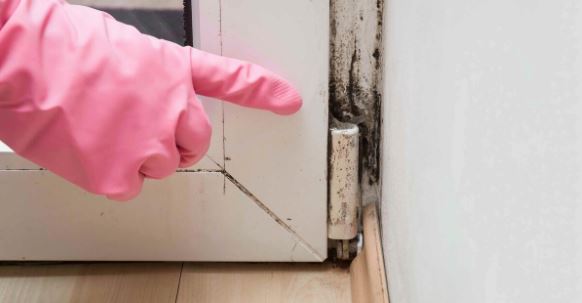
Did You Check for Mold? Why Inspection is Key to Prevention
Mold is a persistent and potentially harmful intruder that can silently take over our homes if left unchecked. Its rapid growth, especially in damp and humid conditions, can lead to health risks and structural damage. While mold removal and remediation are essential when an infestation occurs, prevention is the key to safeguarding your home and family from the dangers of mold.
Taking a proactive stance toward mold prevention begins with a thorough mold inspection. This blog will explore the importance of mold prevention, the benefits of a proactive approach, and some effective prevention strategies to prevent mold growth on your property.
Understanding Mold Prevention: The First Line of Defense
Mold prevention is the process of taking preemptive measures to inhibit mold growth before it becomes a problem. It involves identifying and addressing conditions that foster mold development. By being proactive, homeowners can avoid the need for costly mold remediation and protect their health and property.
The Benefits of a Proactive Approach to Mold Prevention
Health Protection: Mold spores can trigger allergic reactions, respiratory issues, and other health problems. A proactive approach to mold prevention can reduce the risk of health-related concerns caused by mold exposure.
Property Preservation: Mold can compromise the structural integrity of your home, leading to damage to walls, ceilings, and other building materials. A preventative approach helps preserve your property’s worth and condition.
Cost Savings: Mold remediation can be expensive, especially when the infestation is extensive. By preventing mold growth in the first place, homeowners can avoid the financial burden of costly remediation.
Peace of Mind: A mold-free home provides peace of mind, knowing that your living environment is healthy and safe for your family.
Insurance Compliance: Some insurance policies require homeowners to take preventive measures against mold growth. By being proactive, you can ensure compliance with your insurance requirements.
Mold Inspection: The Starting Point for Mold Prevention
A proactive mold protection approach starts with a mold examination. A professional mold inspection involves a thorough examination of your property to detect existing mold growth and identify conditions conducive to mold development. Here’s why a mold inspection is a crucial starting point for mold prevention:
- Early Detection of Mold: A trained mold inspector can identify signs of mold growth that may go unnoticed by homeowners. Catching mold early allows for timely remediation and prevents further contamination.
- Moisture Assessment: Mold thrives in damp and humid environments. A mold inspector can assess the moisture levels in your home and detect potential sources of water intrusion.
- Identifying Hidden Mold: Mold can grow behind walls, in crawl spaces, and other hidden areas. A professional mold inspection uses specialized tools to identify hidden mold growth that may not be visible to the naked eye.
- Indoor Air Quality Assessment: Mold releases spores into the air, affecting indoor air quality. A mold inspection can measure spore levels in the air and determine if further action is needed.
- Recommendations for Mold Prevention: A certified mold inspector can provide recommendations for mold prevention based on their findings. These recommendations may include moisture control, ventilation improvements, and maintenance tips.
Implementing Mold Prevention Strategies
Once a mold inspection has been conducted, it’s time to put the findings into action and implement mold prevention strategies. Here are some effective measures to prevent mold growth in your home:
- Control Moisture: Regularly inspect your home for leaks, plumbing issues, and roof leaks. Address any water damage promptly and ensure proper drainage around your property.
- Maintain Ventilation: Mold prevention requires airflow. Use exhaust fans in bathrooms and kitchens and ventilate your home to reduce humidity.
- Monitor Humidity: Keep indoor humidity levels below 50% to discourage mold growth. Consider using dehumidifiers in damp areas like basements and crawl spaces.
- Ensure Proper Insulation: Proper insulation can prevent condensation and mold growth on walls and ceilings.
- Fix Plumbing Leaks: Address plumbing leaks immediately to prevent water accumulation and mold growth.
- Clean and Dry: Regularly clean and dry areas prone to moisture, such as bathrooms, kitchens, and laundry rooms.
- Use Mold-Resistant Goods: Consider using building materials and paints that are resistant to mold in places that are likely to get wet.
Conclusion
Taking a proactive stance toward mold prevention is essential for protecting your home and family from the dangers of mold. Mold inspection serves as the crucial starting point, allowing for early detection of mold growth and identification of conditions conducive to mold development. By implementing mold prevention strategies and addressing moisture issues promptly, homeowners can create a healthy and safe living environment for themselves and their loved ones. Remember that mold prevention is continuous, and regular maintenance and vigilance are key to keeping mold at bay.
